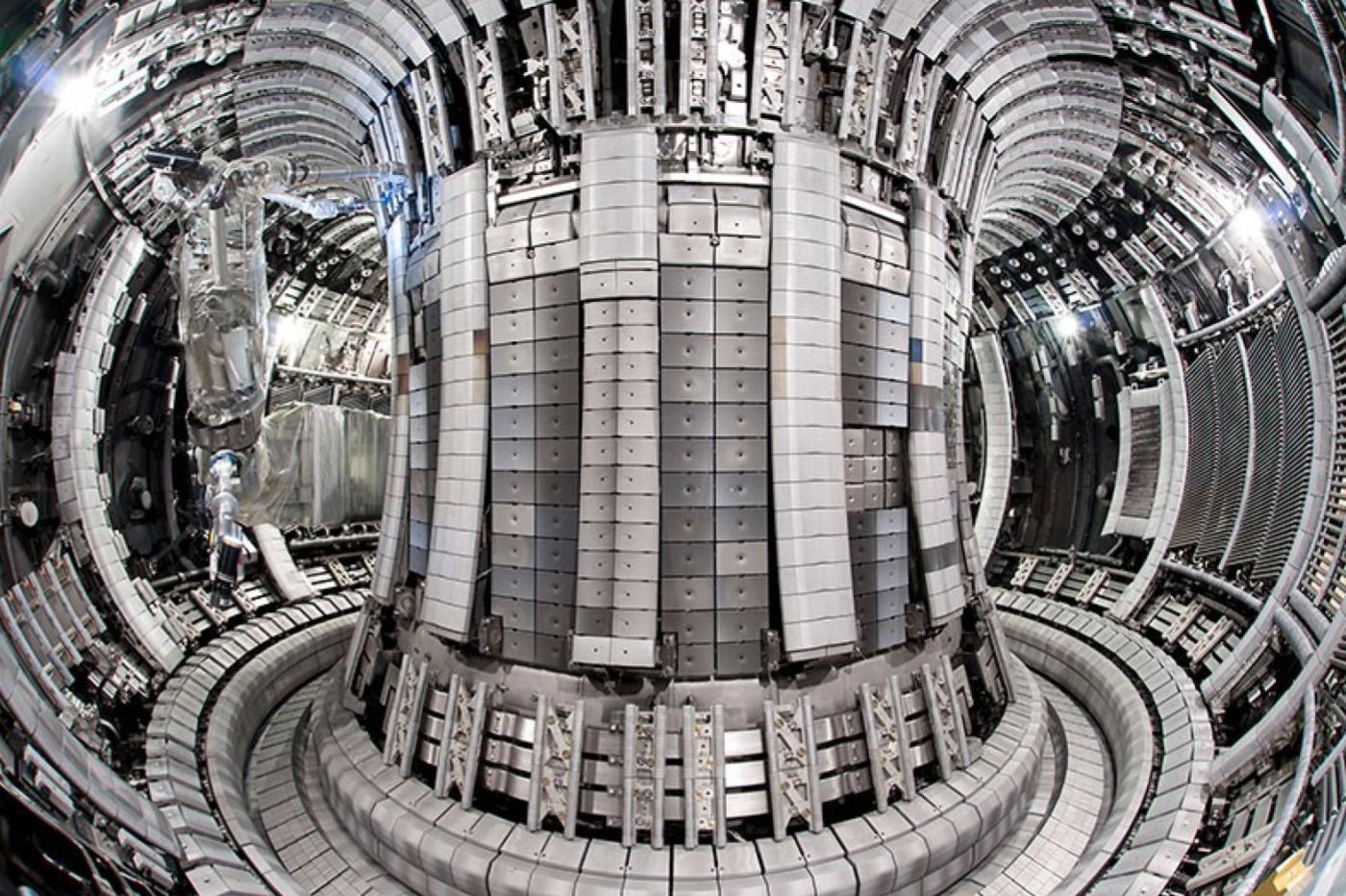
The English JET’s energy production record does not make it a competitor of ITER, quite the contrary; This is great news for the king of European tokamaks.
In Europe, when we talk about nuclear fusion, we necessarily think of ITER, the experimental tokamak under development in the south of France. But this is not the only project working on fusion on the old continent; we should also mention the Joint European Torus, or JET, located in Oxfordshire in the United Kingdom. And its officials have just released impressive test results, which saw the machine beat a 24-year-old energy production record.
Indeed, on December 21, 2021, the JET tokamak managed to produce 59 megajoules of energy in just five seconds. This is more than double the previous record of 21.7 megajoules established in 1997. In absolute terms, this figure is not revolutionary; this energy would barely be enough to boil a few dozen pots.
One small step for JET, one giant leap for commercial fusion
What makes this experience conclusive is rather the duration; keeping their artificial star alive for more than five seconds at such an intensity levelthe researchers were able to validate the viability of the protocol that they have been working to optimize for more than 20 years. “It’s a duration that seems short, but on the scale of fusion, it’s an eternity”, explains physicist Arthur Turrell, interviewed by the BBC.
And these are works whose scope goes far beyond the scope of this installation; they will be very useful for all work on fusion, starting with the famous ITER project. Indeed, the JET has absolutely no vocation to become a competitor. It is above all a complementary research platform at the service of the tokamak based in France.
The stakes of this experiment were therefore considerable, because the protocol that was tested is essentially the same as the one that will allow ITER to achieve its objectives. “The stakes were high. These experiments had to work.”, insists Ian Chapman, head of JET interviewed by the BBC. “Otherwise, we could have been very worried about the viability of ITER“, he concedes with palpable relief. There is therefore legitimate reason to be very enthusiastic about the future of this technology. “Jet behaved as expected, and the same model tells us that this will also be the case for ITER”, says physicist Josefile Proll interviewed by the journal Nature.

The road is now clear
From now on, it is the latter which will have to take over, because this good old JET has reached the extreme limit of its capacities. It is to ITER that will fall the heavy task of passing the cape of profitability. Because at present, these experimental facilities still consume much more energy than they produce. But the model that has been validated by JET confirms that it is theoretically possible to reverse this trend in order to produce energy on a large scale.
Obviously, there are still many obstacles to overcome, and it will still be a long time before achieving the commercial merger; the CEA recalls that the first plasmas of ITER are not expected before 2030, and it will take several more decades before the first fusion power plants flourish. But in recent months, we have seen a succession of remarkable advances in this area, which demonstrates that research is progressing rapidly. And the researchers can only be satisfied with it, knowing how much the control of nuclear fusion could upset the trajectory of our civilization.



